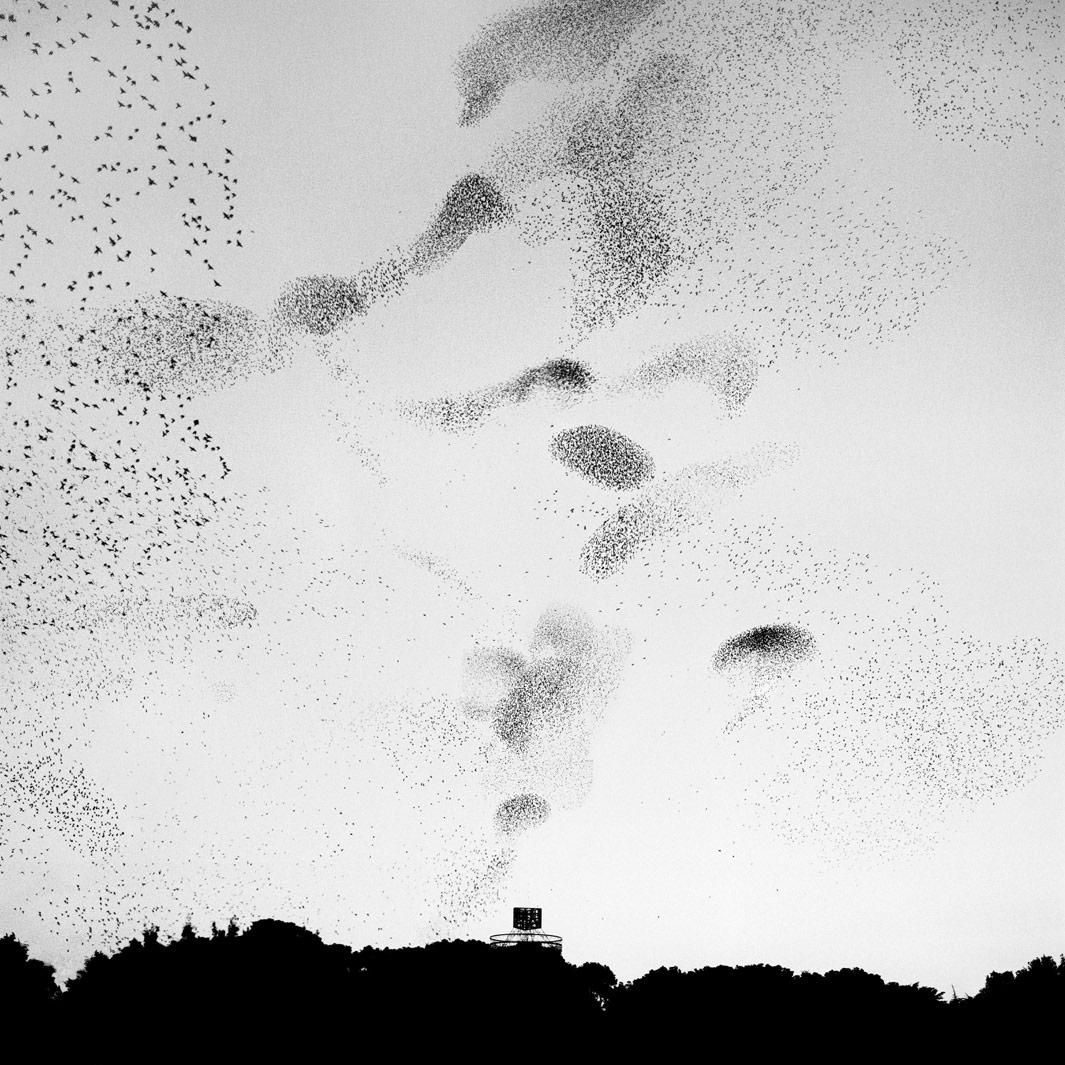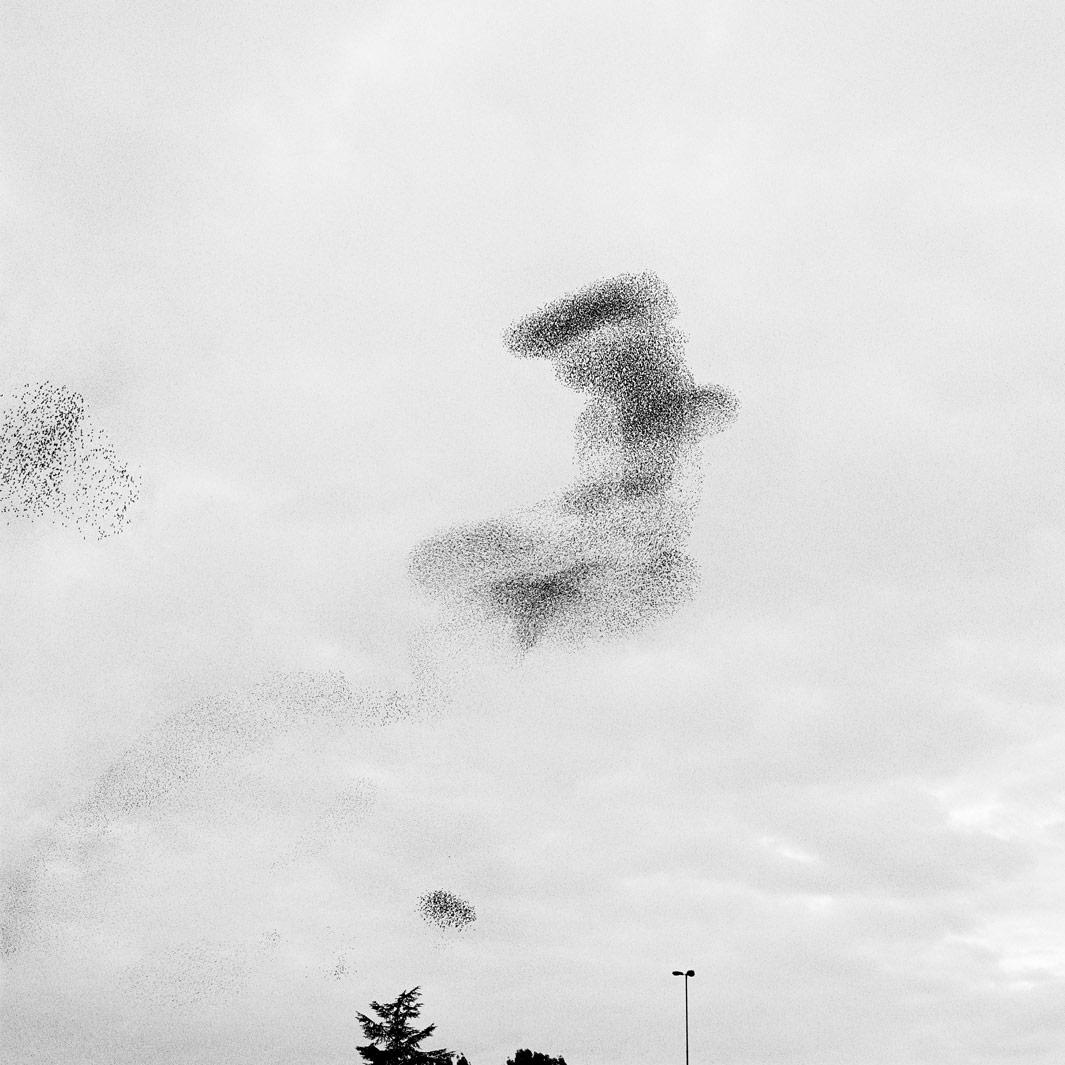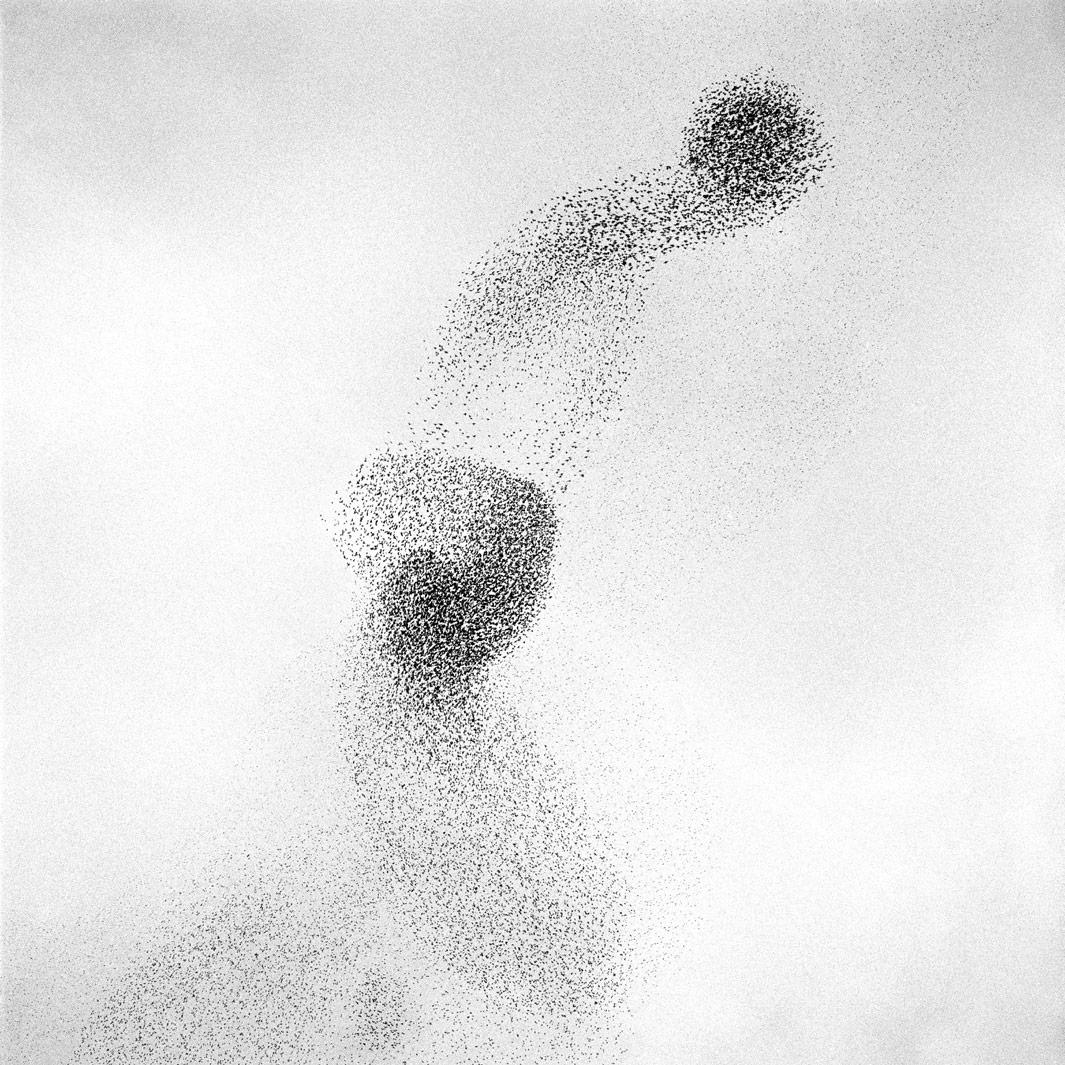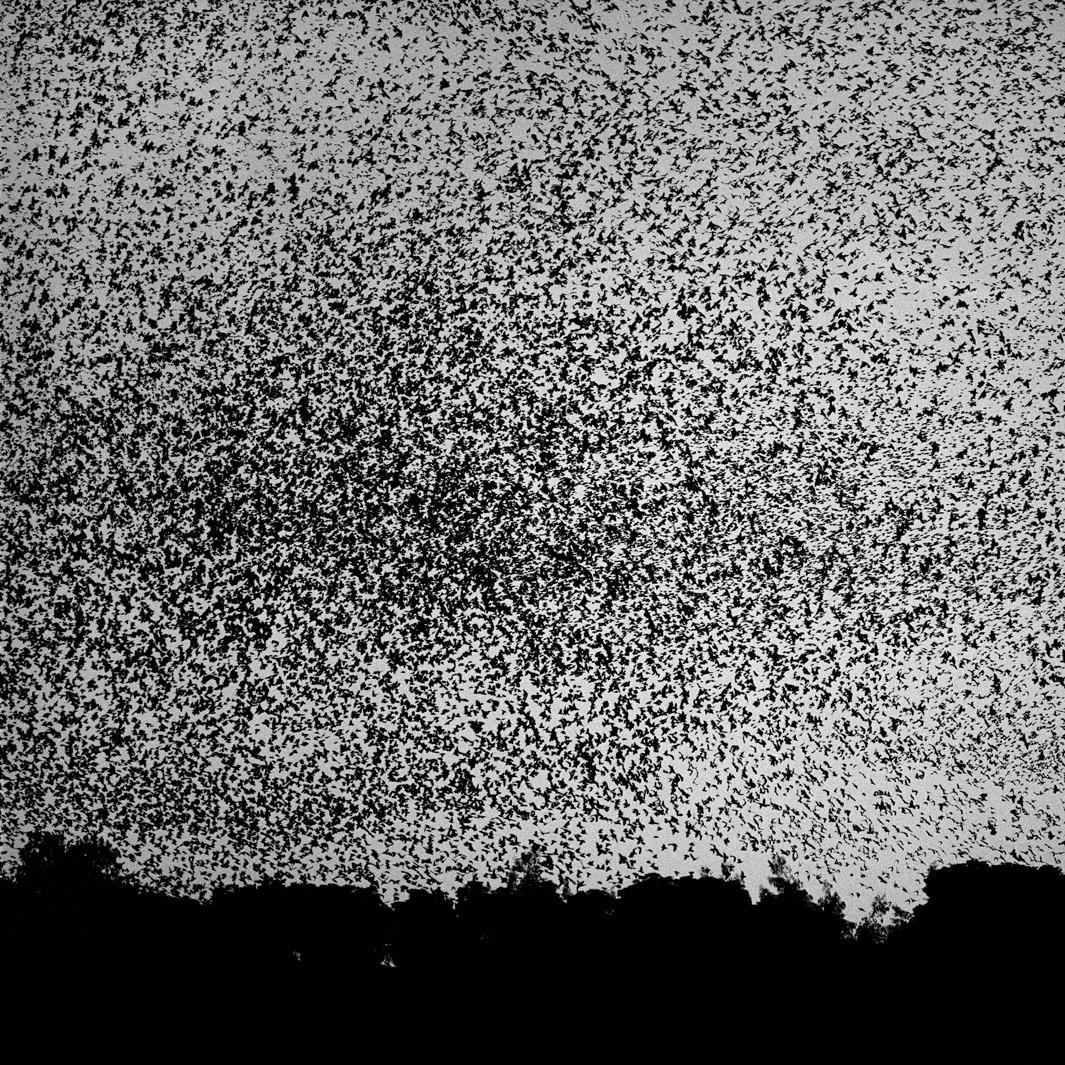Photographer Richard Barnes was in Rome in 2005 and 2006 working on finishing his book, Animal Logic. As it turned out, he got more material for the book as well as a new project.
During a day in October, Barnes said he noticed “a dark, undulating smudge” in the sky and couldn’t figure out what it was. A colleague informed him it was the annual winter migration of the European starlings traveling from northern Europe to the Campagna outside Rome. Inspired by the starlings, Barnes began to photograph them and added some of the images to Animal Logic, including the cover image. He also created a series titled “Murmur,” currently on view at Foley Gallery in New York.

Richard Barnes

Richard Barnes
When Barnes began the project almost a decade ago, he was using a Hasselblad camera; all 26 images in “Murmur” were shot with the Hasselblad and with a 100mm lens at 1/500 of a second. Although he admits the series would have been much easier to shoot with a digital camera, he said film was a better choice. “There was something about the way the grain of the film equated to the massive flocks of starlings in the sky that I really responded to when I started to process the negatives,” Barnes recalled.
Barnes photographed the starlings in Rome’s Esposizione Universale Roma, or EUR, neighborhood that Benito Mussolini built for the 1942 world’s fair; the fair never happened due to World War II. Barnes said the EUR’s wide boulevards and tree-lined streets was a great neighborhood for photographing the birds. He added that it took around 40 minutes from the time the first birds arrived until they had settled into the trees for the night and that their flocking is unlike anything he had ever seen. “They swirl and weave and look strikingly like computer animation in the sky, creating pointillist abstractions one moment, only to disperse and then coalesce into what looks like a ball or a question mark the next,” he said.

Richard Barnes

Richard Barnes
Barnes said that their “choreography” is also fascinating because the dense flocks of birds never hit one another, something that is perplexing to ornithologists.
Although Barnes learned the starlings had been migrating to Rome for decades, he also discovered that the storni who were helping him create beautiful images were also an annoyance from October to February. “The Romans despise the storni, as they shit all over everything in the areas they choose to roost for the night,” he said.
“Murmur” is currently on view at Foley Gallery in New York through March 2 as part of the “Murmur & Refuge” show.

Richard Barnes

Richard Barnes
